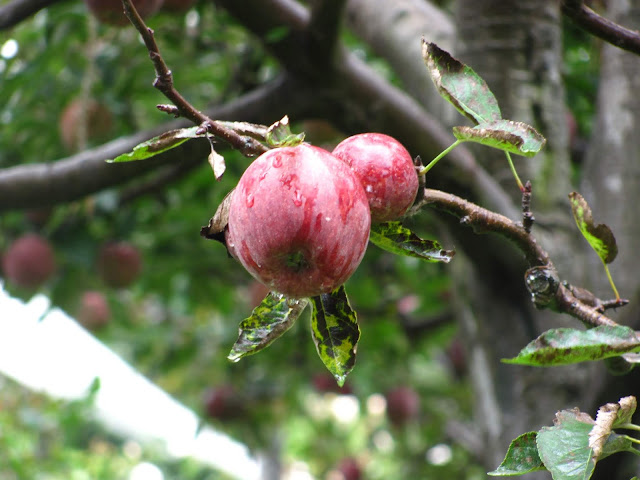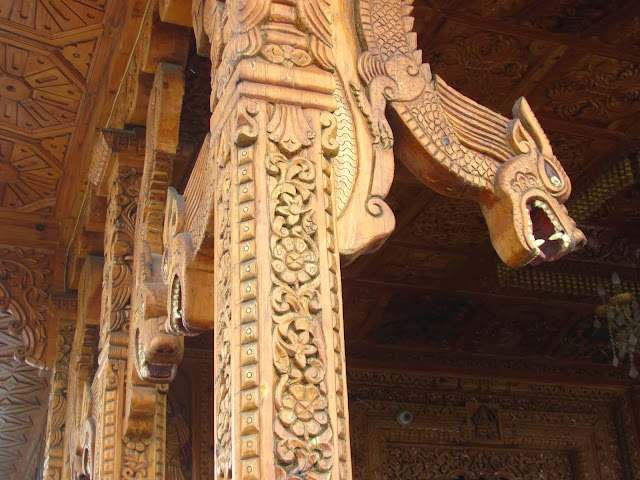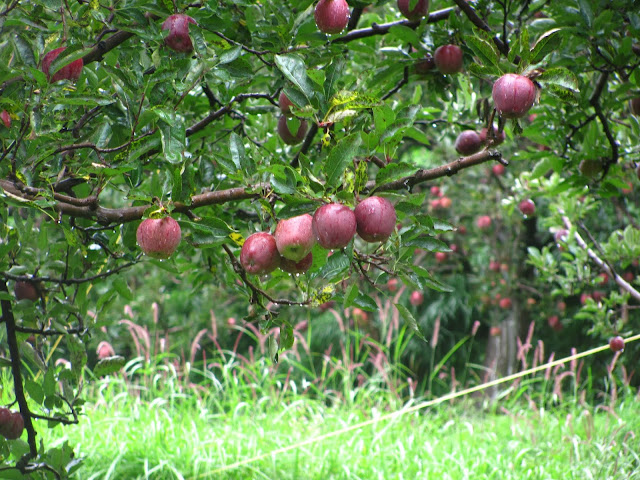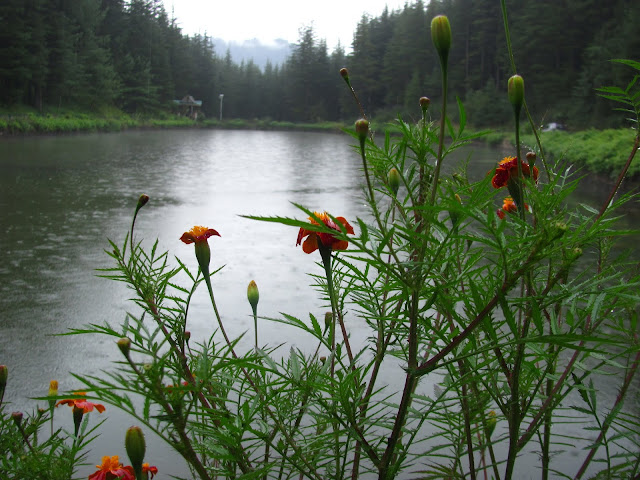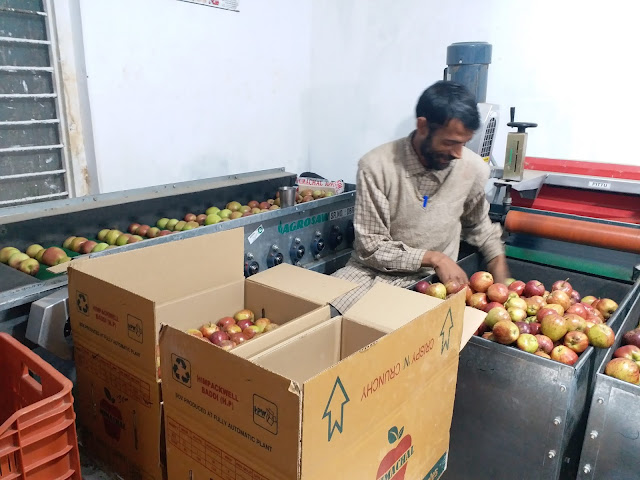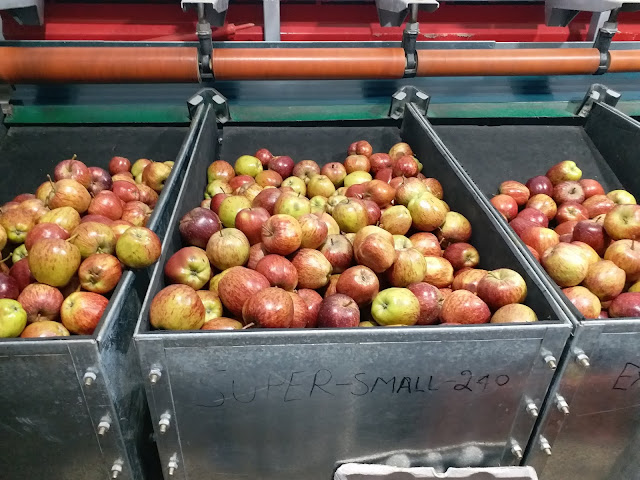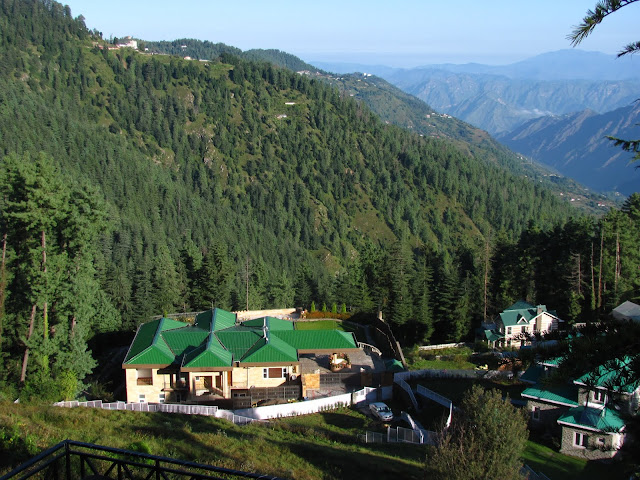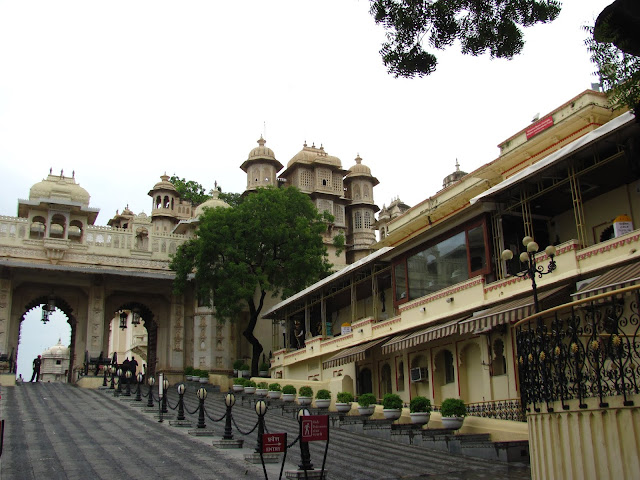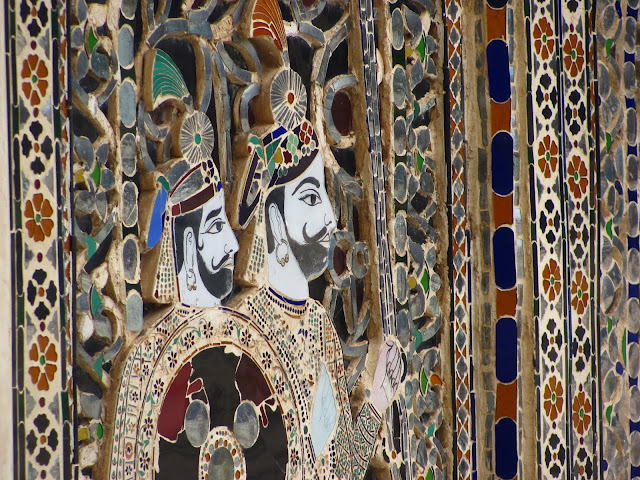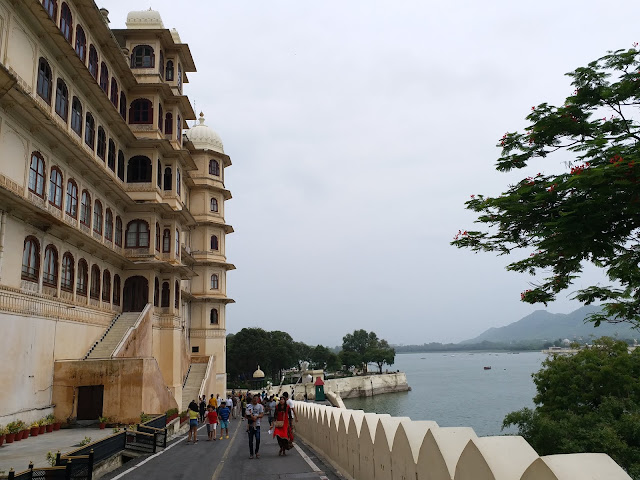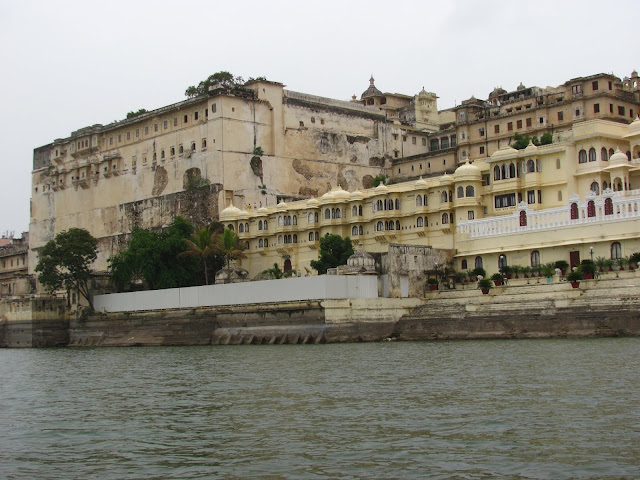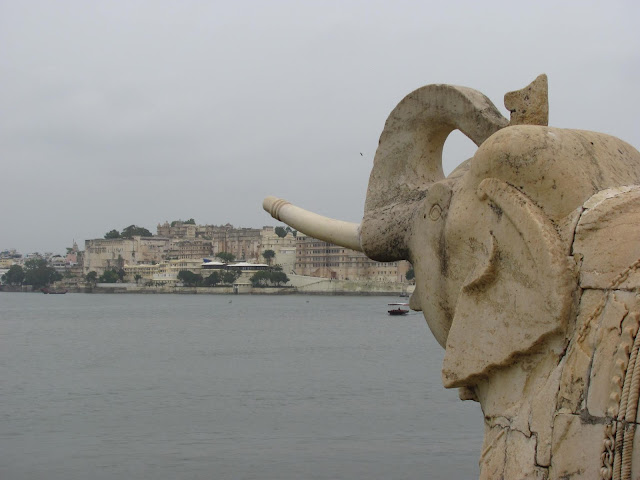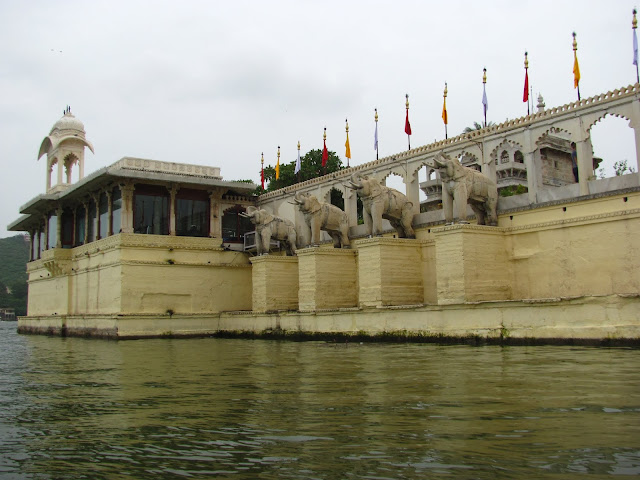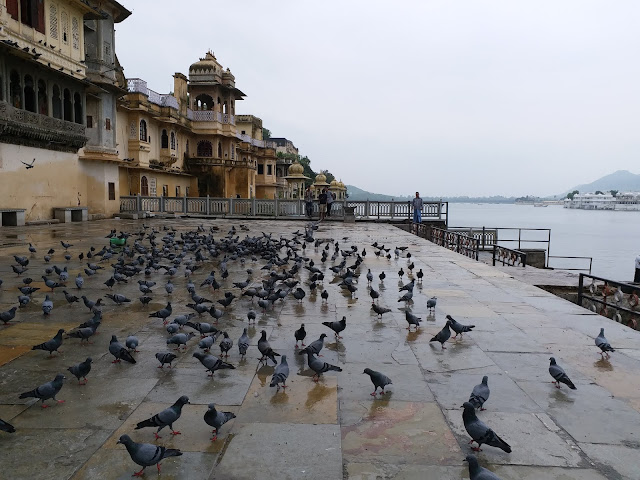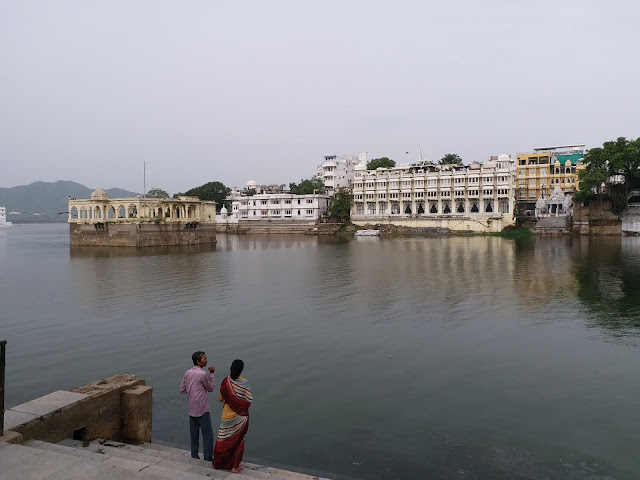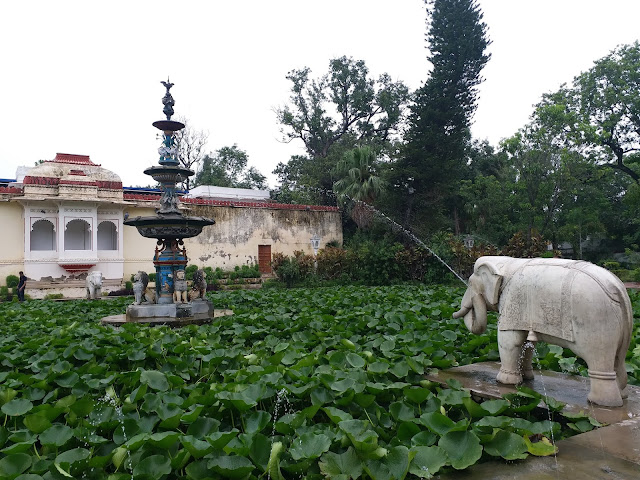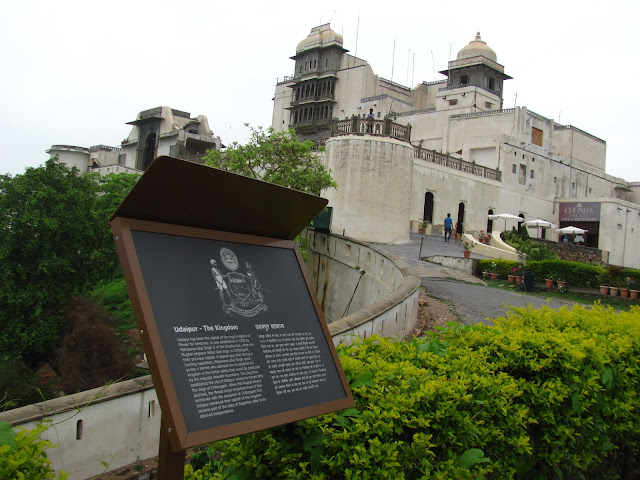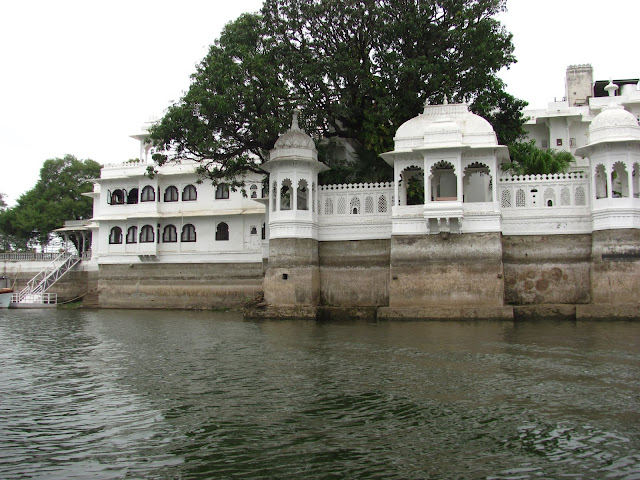 |
| The beauty called Harsil |
I had the fortune of visiting Kumaon & Garhwal himalayas
many a times, however the Chardham till now has remained elusive to me. This
summer I got the chance to visit one of the sacred Chardhams – Gangotri. We
made our base at a small little village called Harsil, at an altitude of 2620
metres, about 25 kilometres ahead of Gangotri. We spent 4 days at the
Bhagirathi valley, and will cherish those days forever.
Rishikesh – The Spiritual Capital of India
The trip started with Rishikesh. Rishikesh is a perfect
amalgamation of nature, spirituality, and adventure. The small rapids of Ganga
with enthusiast rafters, the Yoga schools with people coming from different
parts of the world, and the divine Ganga Aarti performed every day at twilight,
in front of hundreds of believers - all contributes to Rishikesh’s unique charm.
 |
| Ganga Aarti at Rishikesh |
We spent a day in Rishikesh, with a leisurely stroll on the
recently built Aastha Path, along the banks of Ganga, and with a walk down the
Ramjhula crossing the river, to the age old temples of the city.
The evening aarti at Shatrhughna ghat was indeed a treat to
watch. With the sun going down into the river, the chants and the performance
carried out in perfect symphony created a divine atmosphere.
A long Journey to Harsil
Next morning, we wake up really early. Our plan was to cover
the entire distance of 250 odd kilometres between Rishikesh and Harsil in a
day. The road goes through Narendranagar, Chamba Uttarkashi and then starts
climbing uphill into the greater Himalayan range.
Till Uttarkashi the journey was monotonous, with a small
break at a vantage point giving a bird’s eye view of the Tehri Dam. From the
top, the blue waters of Tehri Dam looked gorgeous.
 |
| Tehri Dam enroute Uttarkashi |
Uttarkashi is a bustling town, along the banks of
Bhagirathi. The town is famous for its Vishwanath temple, and hence named the
Kashi of North – Uttarkashi. We visited the temple, it was squeaky clean, in
spite of brimming with pilgrims. We paid our homage to Lord Vishwanath, and continued
our uphill journey towards Harsil.
Entering the Bhagirathi Valley
Soon after crossing Uttarkashi, we started climbing the
steep roads into the greater Himalayan region. In couple of hours we crossed
Gangnani - situated at an altitude of 1820 metres Gangnani is famous for its
hot spring. The mountains around Gangnani is lofty and rugged, with Bhagirathi,
flowing down the gorge below. We stopped there for a small little tea break to
freshen up and also to rest the engine, which has been running almost non-stop
for last 7 hours.
 |
| Bhagirathi at Gangnani- cascading through the rugged mountains |
After crossing Gangnani the landscape changes dramatically,
the Bhagirathi valley starts opening up, the rugged mountains give way to more
greener pastures dotted with Apple orchards and the snow ranges of Garhwal
Himalayas also start appearing around the valley. Sukhi Top – the highest point
on this route provided a gorgeous view of the snowy mountains.
 |
| Himalaya at Sukhi Top |
There’s a small
base camp of Mahar Regiment of Indian army at Sukhi Top. As we stopped at Sukhi
top , the army men greeted us , we had a chat on their life on these harsh mountains
and thanked them for the great service they are doing in protecting the nation.
Bidding them good bye we continued further. Post Sukhi Top
we started descending. With the cascading turquoise Bhagirathi running
alongside us and the snowy mountains on the backdrop, fringed with green apple
orchards and thick deodars, the road looked absolutely ethereal.
 |
| Entering Harsil - Prayer Flags welcome us |
In half an hour time after crossing Sukhi, we entered
Harsil. One has to cross a small pool over Bhagirathi to enter Harsil. Colourful
prayer flags greeted us into Harsil.
With
massive presence of Banderpoonch in its skyline and green pastures below, it
was love at first sight. We checked into GMVN Harsil – the location of GMVN is
absolutely fantastic, our deluxe hut was almost at the banks of the Bhagirathi,
giving a majestic view of Himalayas. The journey was long and tiring, but the chill
in the air and the love of the ever smiling GMVN staffs immediately refreshed
us, and they indeed made the place a perfect home for us for the next 3 days.
 |
| Bhagirathi at Harsil - RiverView from GMVN Harsil |
A day in Bhagirathi Valley
In spite of a long journey the previous day, we wake up
early in the morning. The morning views of Harsil are absolutely majestic. The
banderpoonch peak, in the soft morning sunlight, looked surreal.
 |
| Bandarpoonch at Harsil - Morning View |
In the soft morning light, the view of Bhagirathi from the
GMVN compound was surreal. There is a glasshouse built in the compound to sit
for hours and enjoy the view. The thick deodar forest behind the cascading
Bhagirathi made the entire picture even more beautiful
 |
| GMVN Harsil Glasshouse - Made at the riverbank |
A walk down the nooks and corners of Harsil made us realize
the ethereal beauty of the place. Harsil not only boasts of the presence of
Bhagirathi, but a tributary of Bhagirathi – Jalandhari Gad also runs through Harsil.
We crossed a small foot bridge over Jalandhari Gad and entered into the other
side of Harsil.
 |
| Crossing the Jalandhari Gad |
All around us we could see apple orchards – dotted with new
leaves. People here still uses mules to carry their provisions. Due to its
remoteness Harsil has still kept its primitive beauty alive. We walked up to
Wilson Cottage – built by Mr Wilson, the person who introduced Harsil to apple
cultivation. The cottage has now been turned into a forest rest house.
 |
| Apple Orhards - Harsil |
A few minutes from Wilson House took us to Bagori Village ,
which is a settlement of Bhutia tribes in Harsil. The village is rustic in
nature with wooden houses, and a perfect place to buy handmade woolen products specially the Bagori Shawls. The uniqueness of Bagori is all woolen products of Bagori is black and white, and doesn't contain any artificial colors.
 |
| Harsil Post Office - Sending Greetings to Kolkata |
Harsil has a tiny little marketplace which caters to the
needs of local people. We walked down to the post office of Harsil. The tiny little
post office with mountains in the backdrop is possibly one of Inda’s most scenic
one. As a memory we send a postcard from the post office to our own address.
The place has its own school, primary healthcare center and
government nursery, which all blends perfectly with its pristine beauty.
 |
| Government Nursery - Harsil |
Visiting Mukhwa - The Winter Abode of Maa Ganga
After breakfast we decided to visit Mukhwa village near
Harsil. Significantly this small little village, is the winter abode of Ganga
Mata. During the harsh winters at Gangotri which is at almost 11000 feet, when
the main temple is closed, this village becomes the custodian of the deity. Mukhwa
is primarily a village of the Pujaris of Semwal community who guards the deity
and carries on the rituals for the 6 months in the winter.
 |
| Ganga Mata Temple - Mukhwa |
There’s a motorable road that climbs uphill from Harsil to
Mukhwa and provides some majestic views of the Himalayan snowpeaks. Draupadi ka
Danda, Srikanth are the prominent peaks around Mukhwa.
 |
| Srikantha Peak at Mukhwa Harsil |
When we reached Mukhwa,
it was getting ready for the ‘Ganga Maata ki Doli Yatra’ for the next day.
Every year, on the auspicious day of Akshaya Tritiya the deity is taken back to
its summer abode - Gangotri temple for the next 6 months. The village women
were cleaning the temple complex and were mopping cow dung on the temple
courtyard – a ritual still followed in rural India on festive occasions.
 |
| Mukhwa Temple - Getting ready for the Ganga Ma ki Doli |
When we arrived at
the village the villagers greeted us in open arms, they made seating
arrangements for us, we chatted long with the locals about the history of the
place, about the Ganga Maata Doli Yatra, the apple cultivation and their
economy. The discussions really provided an insight into their lifestyles in
these remote parts of Himalaya.
 |
| The Pure people of Mukhwa Village |
We were fortunate enough to be present during the Ganga
Aarti. The pujari performed the aarti with all its devotion, we had a darshan
of Maa Ganga from so close that we really felt blessed. We were the only tourists
that day in Mukhwa , and to be present in the aarti along with the villagers in
Mukhwa made us feel a part of them, a part of their tradition.
Towards Gangotri
After Mukhwa we started towards Gangotri. The road from
Harsil goes past Dharali, BhaironGhati and Lanka to reach Gangotri.
We drove along the Bhagirathi, the views were mesmerizing. The
valley opens up to its widest at Dharali. The view of Bhagirathi with snow peaks
on the background looked majestic.
 |
| Ganga (Bhagirathi) at Dharali |
After Dharali , the valley once again narrows down, and
Bhagirathi also starts flowing through a deep gorge. As we drove towards
Gangotri, we could see more and more snow on the mountains. Numerous waterfalls,
coming out of the snowy mountains were gushing down the valley. As we drove
towards Gangotri, the famous Bhagirathi peak also appeared on the distance. On
a corner we got the view of Bhagirathi Peak, and the Bhagrathi river together,
which was one of my favourite captures in this trip.
 |
| Bhagirathi Peak and the River - together |
Within an our we reached Gangotri. The town was getting
ready to welcome Maa Ganga for the next six months. The shop owners, hotel owners
have all started coming back. We saw a lot of shops which were getting newly
painted on the occasion of Akshaya Tritiya. We could sense a festive mood in
the air.
We visited the famous and gorgeous Gangotri temple. The
summer abode was also getting ready with all decorations to welcome Maa Ganga for the summer months. The white stone temple with its robust architecture, on the
backdrop of clear blue sky looked majestic.
 |
| Majestic Gangotri Temple |
We went down to the famous ghats on the temple premises, to
touch the water of Bhagirathi on this sacred place. Lot of devotees were
performing rituals on the ghats. The spiritual atmosphere in this beautiful
nature made us grateful to mother nature , made us realize that there is an
almighty which creates such divine places.
 |
| Ganga (Bhagirathi) River at Gangotri |
The waters of Bhagirathi at Gangotri is freezing cold. We
collected the sacred water in bottles, so that we could carry this back to
Kolkata. We sat on the ghats for hours watching devotees performing the rituals.
The town with century old temple, sacred flowing river, holy cows and
omnipresent pilgrims looked imbued with faith, and with the presence of
majestic himalayan snow peaks looked magical.
 |
| Bhagirathi Peak - as seen near Gangotri |
Next Day – Ganga Mata ki Doli Yatra
Next day we once again gathered ourselves at Mukhwa village.
However this time our route was different. We trekked to Mukhwa village from
Dharali, like the local villagers. There is a hanging bridge over
Bhagirathi at Dharali, which we crossed, and then trekked our way through the
apple orchards.
 |
| Dharali Hanging Bridge - Crossing the Bhagirathi |
The trek route is steep however short, and as usual provided
some majestic view of Snow mountains around Dharali and the gorgeous Bhagirathi
Below.
 |
| Trekking to Mukhwa - Himalayan Views |
Mukhwa village was in complete festive mood on that day.
Ganga Maa was getting ready for her journey behind closed door, however the
place was brimming with pilgrims and locals from nearby villages. Everyone was
greeting each other, it was like a festival of community building. The priests
from Gangotri temple was also present at Mukhwa that day. The Mahar regiment of Indan army also
participated on that festival by sending their band who played gorgeous music on
the occasion.
 |
| Band Peformed by Indian Army - Mahar Regiment |
There is a tradition of dancing with the doli performed by
the local performers which was really unique. At the auspicious time of 12.35
p.m Ganga Maa came out in her Doli to start her journey towards Gangotri. As she
came out the place busted with excitement and holi chants. We all touched the
doli to seek her blessing, and then the procession left the temple premises and
continued through the lanes of Mukhwa village towards Gangotri.
 |
| Doli on its way |
The deity will
be kept at Bhaironghati temple on that evening before moving it to Gangotri
temple on the day of Akshaya Tritiya. Experiencing the festval was experiencing
Vijaya Dashami, when the villagers of Mukhwa send a colourful farewell to their
daughter Maa Ganga. It will be a wait of 6 months before their daughter will once
again come back to her winter abode.
 |
| Preparing the Doli |
As the doli went towards Gangotri, we also started walking
down towards Harsil. Our sojourn was also coming towards an end. For the last 3
days we have been blessed with astounding natural beauty, pure hospitality and
magical spirituality.
In a way visiting Gangotri is like visiting the nucleus of Indian
civilization, which developed based on this sacred river. We will definitely
comeback to this place and will visit Gaumukh– the place of origin of Ganga
next time. Till then – ‘Namami Gange’.
Travel Tips
- Harsil is a 10 hour long journey from Rishikesh, but can be doable on a single day.
- Most of the taxi drivers in Rishikesh will insist you to give a stop at Uttarkashi for a day, which in my opinion is not needed.
- Please note, cars do not go till GMVN Harsil, and you have to walk around 200 meters from Harsil Market to reach the GMVN campus.
- Even though Mukhwa can be reached via car from Harsil, the short trek route from Dharali provides better views.
- Please do not click pictures of Military Establishment at Harsil or at Sukhi Top.
- Insist taxi driver to take the Uttarkashi - Suwakholi - Dehradun-Rishikesh route (even though longer). The road condition is very good, compared to the Rishikesh - Narendranagar-Chamba -Uttarkashi route. Tingling point in this route provides brilliant views of Banderpoonch and Swargarohini peaks.
- Regular bus service is available between Rishikesh-Uttarkashi and Dehradun-Uttarkashi
